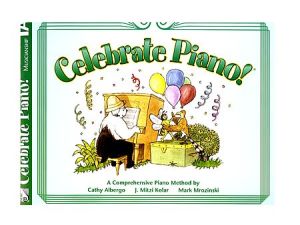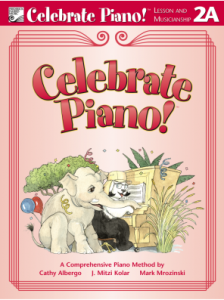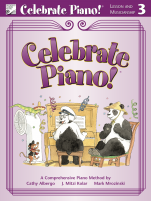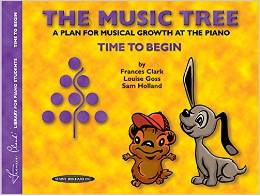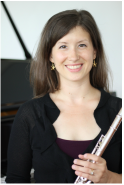The Creative Director Beginning and Intermediate Levels by Edward S. Lisk
Introduction
During my graduate degree work in instrumental conducting, I had several awesome opportunities to meet and work with accomplished band director and clinician Ed Lisk. I think Mr. Lisk’s genius can be summed up in his abilities to 1) clearly define specific aspects of a good musical performance, 2) break down those large aspects into small, well-defined parts and finally, 3) lead students through dependable, sequential steps toward mastery of those parts. To play under his baton as a high school or college student is to discover that you could do so much more than you ever thought you could. His publications are a great resource for activities and information that will bring your band to a whole new level of thought and performance.
I had originally purchased a copy of Ed’s The Creative Director, Alternative Rehearsal Techniques and found his ideas to be incredibly effective at the high school band level. But when I began working as an elementary band director, the activities in the book were just too advanced to try with instrumentalists in their very first year or two. This year I wound up lending the original book to the high school band director in my district and purchasing the one I am going to review today: The Creative Director; Beginning and Intermediate Levels by Edward S. Lisk.
Purpose of the Book
With refreshing frankness, Edward Lisk begins by pointing his finger right at us, the band directors. We are the ones, he emphasises, that are responsible for whether our students succeed or fail. An awesome weekly practice record, he continues, may get the student a good grade but will not guarantee that the student is acquiring the right type of thinking to be successful. Rather, we must be proactive and thoughtful in how we incrementally train our students to think correctly about the music.
This handbook is a tool for teachers of beginning band with any number of years in the field. Its purpose is to help the director to gain an understanding of their students’ mental process and to provide specific activities and steps to help revamp the instructional sequence toward a better fit for that process. With the citing of various psychologists and authors, Mr. Lisk’s book introduction paints the brain as a noisy place in need of specific task focus. The fascinating facts he presents are enough to convince the reader that the traditional, “Open up to Book 1, Page 1 and let’s begin,” approach falls far short of what a new band student actually requires in order to be successful. I will use the remainder of my post to survey the contents of the book and then to provide an overview of my personal experience with the method.
Table of Contents
This 90-page book is divided into a preface, an introduction and fifteen (15) chapters labeled “Lessons” covering various aspects of the instrumental music learning process in sequential order. Here is a list of the contents:
Lesson 1: Beats and Time: The Discipline of Duration
Lesson 2A: Internal Pulse Connected to Playing an Instrument and the Distribution of Air
Lesson 2B: The ABC’s of Music Making
Lesson 3: Making Connections, Discovering Notes by Moving Fingers, Ensemble Timed-Thought
Lesson 4: The Lesson Book: Teaching Whole Notes
Lesson 5: Teaching Half Notes
Lesson 6: Teaching Quarter Notes, Teaching Silence
Lesson 7A: Introducing the Ruler of Time, Demonstrating Tempo Variations
Lesson 7B: Teaching Eighth Notes
Lesson 8: Speaking Rhythm Patterns
Lesson 9: Tied and Dotted Notes (and why they are a problem)
Lesson 10: Rhythm Patterns: Short Looking for Long
Lesson 11: Dynamics, Dynamic Counting, Color Shifts, Seeing a Crescendo and Decrescendo
Lesson 12: Introducing the Circle of 4ths, Beginner’s Row
Lesson 13: The “Scale Alphabet” for scale mastery, The Importance of Scale Knowledge, Grand Master Scale, The Octave of Reason, Playing scales Without Notation
Lesson 14: Learning to Play in Tune
Lesson 15: Finale: What’s Next?
Chapter Structure
In each brief chapter, you will find rationale given for the type of instruction delineated. His writing style is easy to read and understand. There are many diagrams and pictures to clarify his worded explanations and he is great at breaking each concept into step-by-step processes that can be conveyed to students. Diagrams can also be copied and used in your classroom. It is a very user-friendly format that readily transfers to classroom instruction.
My Experience With the Book
Many of his ideas for band instruction are unique to him such as his Ruler of Time–a diagram that can be used to help kids “see” note duration to the exact moment sound ends or begins. (This is also a tool for providing a visual demonstration when students are not playing together. By simply mapping their varying attack points on the ruler, more visually oriented students can see when they are playing their note slightly before or after the actual time the note should sound.)
Throughout the book, what he gets at is how to isolate and practice the very basic tasks needed to be successful at playing an instrument. As an example, take the concept of pulse. For this, Mr. Lisk recommends starting students with no instrument in hand. Instead he describes simply having them count out loud at a tempo of 60 beats per minute. Once the students can count out loud steadily, he describes how to train them to think the counting internally by saying some numbers and thinking others until finally the majority of steady counting is happening internally–exactly where it will be happening once the instrument is involved. It’s a matter of training, so he suggests to repeat the activity for several lessons in a row.
The entire book is full of short, well defined mental tasks like this to help students master the individual layers of thinking skills within the large skill–and students LOVE to complete every challenge. What I found so awesome about this approach was that every student had multiple opportunities to enjoy success throughout each lesson. For example, the flutes worked on trying to make a consistent tone for months but they never got discouraged from the instrument because every band lesson included many other activities that all students had no problem accomplishing. One such task was learning to speak the musical alphabet forward and backward (preparing to play scales). Others included isolated rhythm practice and breath control. By the time they are asked to play a song that involves the many tasks they have already mastered, it’s a piece of cake because their brain has practiced how to think about the music.
I might also add that being the teacher in this environment is highly riveting and exciting. We love when our students have those “aha” moments–and this method of teaching results in several during each lesson–especially in the first two months of instruction. One of my mentors in the field, Dr. Adam Brennan at Mansfield University, taught me that success is all important in the music learning process. He showed me that it is our responsibility as educators to set our students up so that their attempts will meet success a majority of the time. This means we need to be careful to prep our students continually so that they are never asked to attempt a task in which they have no prior experience.
I always refer back to one of my own “aha” moments when I think about how to “prep” my students for a new skill. As a kid, I loved to play the piano and would sometimes spend hours making things up at the instrument. I randomly stumbled on some pretty basic chord progressions (think every rock song ever written!). Except, I didn’t know what a “chord progression” was, I just knew I had stabbed around and discovered something that sounded good. Later, in high school music theory, I was introduced to chord progressions–many like the ones I had “discovered” as a child. “Aha” I thought, “That’s what these are called!” I already knew what a chord progression was, I just didn’t know I knew it. When someone showed it to me, I was prepped for success and easily understood the concept. Ed Lisk’s book is essentially about this idea. His theme is getting our students to accomplish tasks without complicating the concepts through a bunch of “gobbledygook” (like foreign words, strange symbols or too many new things at once.) Those things will, of course, be introduced in their time–but only when the final task is to put a name to that thing they can already do. It’s also about allowing students to enjoy the tiniest accomplishments at a time–otherwise known as lowering our expectation. But contrary to what this may sound like, the achievement levels in your band room will skyrocket when the requirements to be “successful” are lower, not the other way around. And so will the fun levels!
Summary
Ed Lisk’s book The Creative Director for Beginning and Intermediate Levels provides a broad and firm foundation for band directors to teach at the beginning level of instruction. It shows us how to narrow down our instruction to the bare essentials of success on an instrument before building up to more complex thinking. For inexperienced and experienced directors alike, this instruction manual will streamline the first few years of instrumental music instruction and raise the ceiling of potential for any large ensemble as a whole. Plus, it’s FUN to teach! I highly recommend The Creative Director for Beginning and Intermediate Levels!

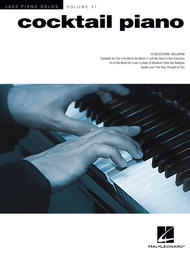 I’m writing today about a solo series I have absolutely fallen in love with: Jazz Piano Solos Arranged by Brent Edstrom and various [unnamed] others and published by Hal Leonard. This series contains over 35 volumes of about 25 songs each. It covers jazz styles from stride piano to swing to rock as well as artists from Duke Ellington to George Gershwin to the Beatles.
I’m writing today about a solo series I have absolutely fallen in love with: Jazz Piano Solos Arranged by Brent Edstrom and various [unnamed] others and published by Hal Leonard. This series contains over 35 volumes of about 25 songs each. It covers jazz styles from stride piano to swing to rock as well as artists from Duke Ellington to George Gershwin to the Beatles. Ashamedly, I admit, I used to cringe at the prospect of teaching holiday music. In disdainful snobbishness, I would limit my holiday selections to one or two–even for my band concerts–in favor of teaching more “educational” and “high quality” music. Over the years, however, I have come to appreciate what the holiday season offers us as music educators and to invite the joy of the season to permeate my band classroom and piano studio. I now recognize that the youthful excitement inherent with Christmas is a gift to our musical goals if we can accept it, encouraging great strides in our students.
Ashamedly, I admit, I used to cringe at the prospect of teaching holiday music. In disdainful snobbishness, I would limit my holiday selections to one or two–even for my band concerts–in favor of teaching more “educational” and “high quality” music. Over the years, however, I have come to appreciate what the holiday season offers us as music educators and to invite the joy of the season to permeate my band classroom and piano studio. I now recognize that the youthful excitement inherent with Christmas is a gift to our musical goals if we can accept it, encouraging great strides in our students.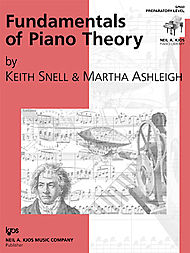
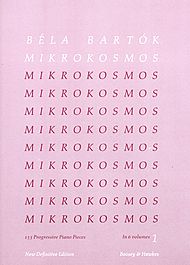 Today, let’s focus on a staple of the piano education repertoire:
Today, let’s focus on a staple of the piano education repertoire: 